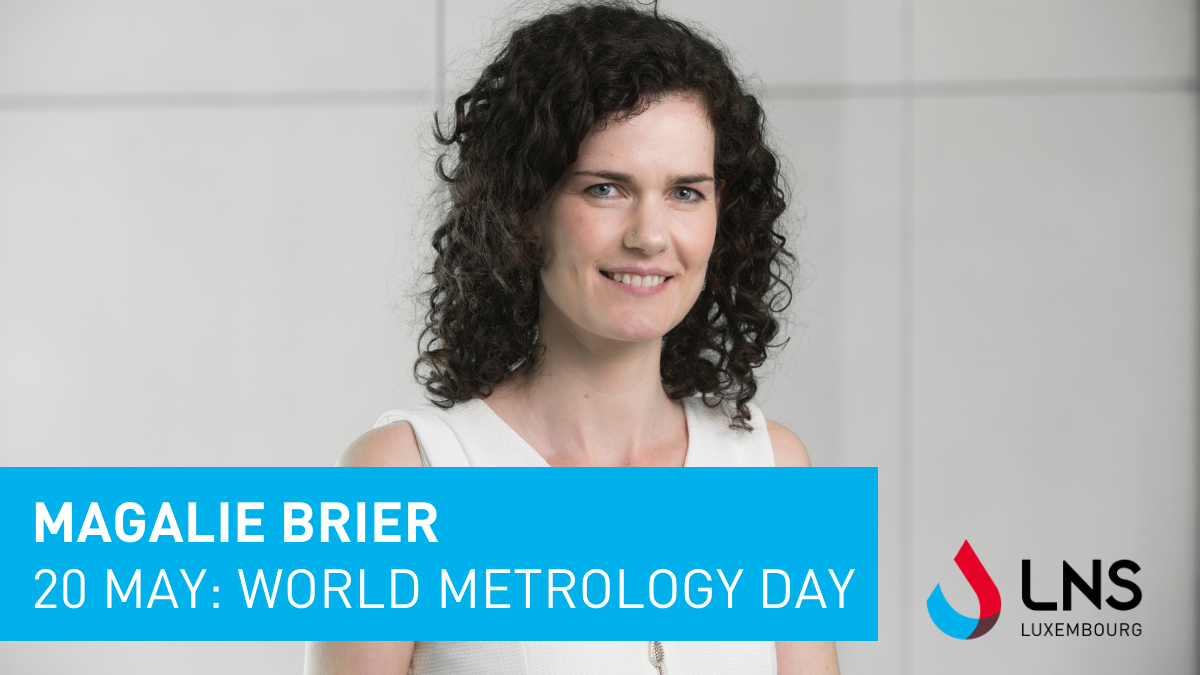- The Laboratory
- Organization
- Departments
- Jobs
- Analysis book
- Contact
- News
- Publications
- Download



It is a term that most people do not really know how to define and that is often mistaken with meteorology. Yet ‘metrology’ is omnipresent in our daily lives, and we use it every day: when we shop, cook, fill up our car with petrol, go to the doctor, the garage or the bakery.
Metrology is the science of measurement. It plays a central role in scientific discoveries and innovations, in industrial production, in international trade, and thus in improving our quality of life. 20 May has officially been designated World Metrology Day. It was on this date that the International Metre Convention was signed in 1875 by representatives of seventeen nations. This convention provided a framework for worldwide cooperation in the science of measurement and its industrial, commercial and social applications. Its objective, the worldwide unification of measurement, is as important today as it was in 1875.
Since 2004, World Metrology Day, organised jointly by the Bureau International des Poids et Mesures (BIPM) and the International Organisation of Legal Metrology (OIML), has been assigned a theme each year. This year’s theme is “Metrology in the Digital Age”, emphasizing the central role of digital technology in our society.
For a scientific institution like the Laboratoire national de santé (LNS), metrology naturally plays a key role. Therefore, the institution has hired a full-time metrology coordinator to oversee this activity. Magalie Brier gives us an overview of this fascinating field, its importance for science, and her work at the LNS.
The classic way is to follow courses offered by different institutions or to train as you go along thanks to continuing education. I started out in the field of agri-food biotechnology as a laboratory technician. My knowledge of laboratory techniques, work tools and their applications, as well as my interest in the field of quality and metrology, enabled me to move into this profession.
In 2016, I was contacted by Ms Simon, former Quality Manager of the LNS, to join her team. Given the reputation of the LNS and the challenge that the job represented, I accepted the offer without hesitation.
The LNS brings together various laboratories that use measuring instruments to carry out their analyses. I support the metrology referents of each department in their work, which consists of ensuring the proper functioning and reliability of their equipment.
In the field, this translates firstly into an organisational aspect by pooling resources, particularly in terms of reference equipment and managing external service providers. The activities are carried out in accordance with normative requirements and are intended to guarantee the proper functioning of the measuring instruments and therefore reliable results.
The second mission of my position at the LNS is consulting and training. I train the metrology referents and harmonise their practices by making available procedures based on the standards in force.
I am often asked the question: what is metrology? Actually, people tend to confuse metrology with meteorology. Unfortunately, it is a field that is not well known. Metrology can be found in all areas of life, whether at work or in our day-to-day life, and it is often unnoticed.
It is by definition the science of measurements and its applications. It enables measuring instruments to be evaluated by connection to reference standards, i.e., to determine their technical characteristics in order to establish their conformity.
Three sectors can be distinguished:
LEGAL metrology is applied for consumer protection (supermarket scales, petrol pumps and radars are subject to it).
INDUSTRIAL metrology (as in the case of the LNS) ensures the reliability of measurement results, the control of manufacturing processes and inspection operations.
SCIENTIFIC metrology is complementary. It is based on research into the units of the International System and on the development of new techniques.
Metrology has evolved considerably in recent years. Originally practised to detect malfunctions, it has become a tool for anticipating and avoiding them. This is why we regularly connect our equipment and why we have set up very regular checks. It is quite similar to the maintenance of a car. You have to undergo a technical inspection once a year but at the same time, every time you use your car, you check that the equipment is working well: the headlights, the brakes, etc.
Measurement is present in all sectors of activity: economy, health, safety, research, development, technologies. It is therefore natural to take a great interest in it. It is one of the components of the quality management system. It is a tool for maintaining confidence in the results of the LNS analyses and plays an important role in our accreditation processes.
The LNS controls the traceability of its measuring equipment by linking it to national or international standards. For example, it works with the Bureau Luxembourgeois de Métrologie, the national reference laboratory, and other competent calibration laboratories based in Europe.
Metrology has not escaped the digital revolution. It especially allows an increase in performance by reducing sources of uncertainty and thus preserving a high level of safety and quality of results, which is fundamental.
At the LNS, our metrology system is mainly digital. We use digital data to acquire, transfer, analyse and exploit measurements.
For example, the LNS has a fully automated monitoring centre that measures the environmental parameters (such as temperature and humidity) of nearly 400 pieces of equipment in real time using digital sensors. The system thus guarantees the conditions under which analyses are carried out, and under which the equipment is stored and transported.
Digitalised or not, metrology is with us everywhere, every day. I therefore think it is right to dedicate a day to it, during which we raise awareness about its place in our society today.